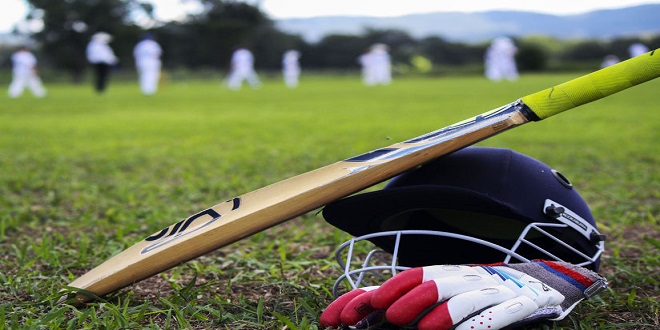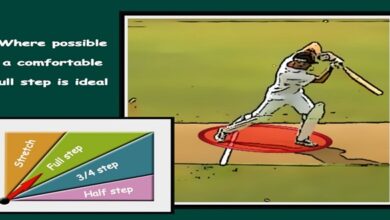Grabbing the Right Gear: Cricket Equipment

Taking a peek at the cricket ball
The shape and size of a cricket ball are one of the few things in the game to be stuck in a time warp. It has been virtually unchanged for well over a hundred years. Perhaps cricket’s authorities figure that if it’s not broken, don’t fix it. The cricket ball is key to the game. The seam that runs around its circumference can make the ball bounce away and towards the batsman once it hits the wicket. See Chapter 6 for the low-down on the cricket ball.
Getting Personal: Choosing a Bat
Whether your main job in the side is to bat, bowl, or keep a wicket you’re going to need a cricket bat. You may never bowl a ball in anger, but every member of a cricket team gets to strut his stuff as a batsman. Some club sides have a team kit bag, normally with bats, pads, and gloves for players to choose from. But, generally, you’re best off buying your own bat to use.
Pricing up a cricket bat
You can pay anything from £50 up to nearly £300 for a cricket bat. At the lower end of the price scale, bats are made from low-grade willow – see more below – and are mass-produced. Pay full whack and you can get your hands on a prime example of the bat maker’s art, made from the best quality willow and handcrafted to your own specification; see ‘Buying a bat or having one made’ later in this chapter for more on having a bat custom built.
Deciding on the right bat
The lighter the bat, the quicker you should be able to maneuver it in the air. On the other hand, the heavier a bat, the more impact it may have on the cricket ball. Most hard-hitting, powerful batsmen tend to use heavy bats. The great former England batsman Sir Len Hutton once described handling the bat used by fellow England great Ian Botham as ‘like picking up a railway sleeper’. Botham was famed for hitting the ball high and far.
Buying a bat or having it made
The vast majority of club cricketers buy their bats off the shelf: They hunt around the shops for one that feels just about right. Some cricketers, though, go the extra mile and pay for a manufacturer to make a bat to their own specifications.
One bat maker I know actually welcomes visitors into the workshop allowing them to pick the piece of wood to be used in the manufacture of the bat and introduces them to the person who will make it. However, such Hollywood treatment costs plenty of cash.
Using your head: Wearing a helmet
Wearing a cricket helmet when batting or standing in the field close to the batsmen can be a real life-saver. If you have ever seen a player who was not wearing a helmet being struck on the head by a cricket ball, you’ll know how sickening the sight is.
Against the faster seam and swing bowlers, you really should wear a helmet. Some batsmen argue that they feel encumbered by a helmet but by practicing in the nets while wearing one you get used to it. See Chapters 5 and 9 for more on net practice.
Protecting your hands and arms
Hand injuries are common in cricket. Some batsmen suffer broken fingers and blow to the arms with alarming regularity. All players, when their turn comes to bat, wear batting gloves – without them, hand injuries would be even more commonplace.
The palm of a batting glove is made of leather, making it easy to grip the bat handle. The other side of the batting glove is encased in padding to cushion any blow received from the cricket ball.
Masstamilan is a popular website that offers Tamil songs for free downloads. It is a go-to platform for Tamil music lovers to find their favorite tracks easily.
Last word
After you have all the kit you can equip yourself with, you need to decide what you’re going to carry it all around in. You’re going to need a kit bag. The more equipment you have the bigger the bag. Some players prefer to travel light – just the bare essentials of clothing, batting pads, gloves, and helmet. Others, though, like to carry around an Aladdin’s cave of cricketing goodies – a bit of strapping or special spray for every possible occasion.




